Understanding Project Quality Management
Project Quality Management involves processes such as quality planning, assurance, and control to ensure that a project meets the relevant quality standards. It encompasses activities like identifying quality standards, evaluating project performance, and monitoring results to improve overall quality. Quality assurance focuses on satisfying quality standards and continuous improvement, while quality control involves making acceptance decisions and process adjustments. Various tools and techniques like Pareto analysis, statistical sampling, and Six Sigma are used to enhance quality in projects.
Download Presentation

Please find below an Image/Link to download the presentation.
The content on the website is provided AS IS for your information and personal use only. It may not be sold, licensed, or shared on other websites without obtaining consent from the author. Download presentation by click this link. If you encounter any issues during the download, it is possible that the publisher has removed the file from their server.
E N D
Presentation Transcript
Chapter 10: Project Quality Management 1
What Is Quality? The Standardization (ISO) defines quality as the totality of characteristics of an entity that bear on its ability to satisfy stated or implied needs Other experts define the quality based on conformance to requirements: meeting written specifications appropriateness for use: ensuring a product can be used as it was intended International Organization for 2
Project Quality Management Processes Quality planning: identify/find which quality standards are relevant to the project (scope) and how to satisfy them Quality assurance: evaluating total project performance to ensure the project will satisfy the relevant quality standards Quality control: monitoring specific project results to ensure that they comply with the relevant quality standards while identifying ways to improve overall (the Project s) quality 3
Quality Planning Design of experiments helps to identify which variables have the most influence on the overall outcome of a process Many aspects of IT projects affect the quality: performance, reliability, maintainability 4
Quality Assurance Quality assurance process includes all the activities related to satisfying the relevant quality standards for a project Another goal of quality assurance is continuous quality improvement Benchmarking can be used to generate ideas for quality improvements Quality audits (checks) help to identify lessons learned that can improve performance on current or future projects 5
Quality Control The main outputs of quality control are acceptance decisions rework process adjustments Some tools and techniques used: 1. Pareto analysis 2. statistical sampling 3. Six Sigma 4. quality control charts 5. testing 8
1-Pareto Analysis Pareto analysis involves finding the vital few contributors that give explanation for the most quality problems in a system Also called the 80-20 rule meaning that 80% of problems are often because of 20% of the causes Pareto diagrams are histograms that help to identify and prioritize problem areas 9
MINICASE You are a part of a team analyzing quality problems that you have with your call center/customer service area. After studying customer complaints, you have categorized and logged them for a week as follows: Part 1: Create a Pareto diagram based on the information in the table below 11
MINICASE (Cont) Complaint Category Frequency/week Customer is on hold too long 90 Customer gets transferred to wrong area or cut off Service rep cannot answer customer s questions Service rep does not follow through as promised 20 120 40 12
MINICASE (Cont) Part 2: Your team has decided to add some customer service features to your Web site. You believe that having Frequently Asked Questions and answers will help reduce the complaints about service reps not being able to answer customers questions and will lower the volume of calls. Customers and service reps could access information through this new Web page. However, you know that while people complain about call centers, they also complain about Web sites. Develop a list of at least four potential complaints that your customers and service reps might have about this new Web page, and then describe your plans for preventing those problems. Describe also how this new Web page could continuously help to improve the quality of service provided by your call center/customer service area. 13
2-Statistical Sampling and Standard Deviation Statistical sampling involves choosing part of a population of interest for inspection The size of a sample depends on how representative you want the sample to be Sample size formula: Sample size = .25 X (certainty Factor/acceptable error)2 14
Table 8-2. Commonly Used Certainty Factors Desired Certainty 95% 90% Certainty Factor 1.960 1.645 1.281 80% 95% certainty: Sample size = 0.25 X (1.960/.05) 2 = 384 90% certainty: Sample size = 0.25 X (1.645/.10)2 = 68 80% certainty: Sample size = 0.25 X (1.281/.20)2 = 10 15
3 - Six Sigma Defined Six Sigma is a comprehensive and flexible system for achieving, maximizing business success. Six Sigma is uniquely driven by well understanding of customer needs, disciplined use of facts, data, and statistical analysis, and diligent attention to managing, improving, and reinventing business processes. * sustaining and *Pande, Peter S., Robert P. Neuman, and Roland R. Cavanagh, The Six Sigma Way. New York: McGraw-Hill, 2000, p. xi 16
Basic Information on Six Sigma Thetarget for perfection is the achievement of no more than 3.4 defectsper million opportunities The principles can apply to a wide variety of processes Six Sigma projects normally follow a five-phase improvement process called DMAIC 17
DMAIC Define: Define the problem/opportunity, process, and customer requirements Measure: Define measures, collect, compile, and display data Analyze: Examine process details to find improvement opportunities Improve: Generate solutions and ideas for improving the problem Control: Track and verify the stability of the improvements and the predictability of the solution 18
How is Six Sigma Quality Control Unique? It requires an organization-wide commitment Six Sigma organizations have the ability and willingness to adopt contradictory objectives, like reducing errors and getting things done faster It is an operating philosophy that is customer- focused and attempts to drive out waste, raise levels of quality, and improve financial performance at advance levels 19
Examples of Six Sigma Organizations Motorola, Inc. pioneered the adoption of Six Sigma in the 1980s and saved about $14 billion Allied Signal/Honeywell saved more than $600 million a year by reducing the costs of reworking (adaptation-change) defects and improving aircraft engine design processes General Electric uses Six Sigma to focus on achieving customer satisfaction. 20
Six Sigma and Statistics The term sigma means standard deviation Standard deviation measures how much variation exists in a distribution of data Standard deviation is a key factor in determining the acceptable number of defective units found in a population Six Sigma projects struggle for no more than 3.4 defects per million opportunities yet this number is confusing to many statisticians 21
Standard Deviation A small standard deviation means that data cluster closely around the middle of a distribution and there is little variability among the data A normal distribution is a bell-shaped curve that is symmetrical about the mean or average value of a population 22
Figure 8-2. Normal Distribution and Standard Deviation 23
Table 8-3. Six Sigma and Defective Units Specification Range Percent of Population Defective Units (in +/- Sigmas) Per Billion Within Range 1 68.27 317,300,000 2 95.45 45,400,000 3 99.73 2,700,000 4 99.9937 63,000 5 99.999943 57 6 99.9999998 2 24
Table 8-4: Six Sigma Conversion Table https://en.wikipedia.org/wiki/Six_Sigma The Six Sigma convention for determining defects is based on the above conversion table. It accounts for a 1.5 sigma shift to account for time and measures defects per million opportunities, not defects per unit. 25
4 - Quality Control Charts and the Seven Run Rule A control chart is a graphic display of data that illustrates the results of a process over time. It helps prevent defects and allows you to determine whether a process is under control or out of control The seven run rule states that if seven data points in a row are all below the mean, above the mean, or increasing or decreasing, then the process needs to be examined for non-random problems 26
5- Testing Many IT professionals think of testing as a stage that comes near the end of IT product development Testing should be done during almost every phase of the IT product development life cycle 28
Figure 8-4. Testing Tasks in the Software Development Life Cycle 29
Types of Tests A unit test is done to test each individual component (often a program) to ensure it is as defect free as possible Integration testing occurs between unit and system testing to test functionally grouped components System testing tests the entire system as one entity User acceptance testing is an independent test performed by the end user prior to accepting the delivered system 30
Figure 8-5. Gantt Chart for Building Testing into a Systems Development Project Plan 31
Software Quality Assurance Software Quality Assurance Covers 1. Aqualitymanagement approach, 2. Effective SE methods and tools, 3. Formal technical reviews (FTR s) 4. A good testing strategy 5. Control of software documentation 6. Software configuration management (Keeping Track Changes) 7. Assuming compliance with software development standards 8. Reporting and measurement of progress mechanisms 33
Elements of Quality include: Quality of Design: refers to the characteristics that designers specify for an item Quality of Conformance: is the degree to which the design specifications are followed during manufacturing. Again, the greater the degree of conformance, the higher is the level of quality of conformance. In software development, quality of design encompasses requirements, specifications, and the design of the system. Quality of conformance is an issue focused primarily on implementation. If the implementation follows the design and the resulting system meets its requirements and performance goals, conformance quality is high. Quality Control: is a series of inspections, reviews and tests used throughout the development cycle, to ensure that each work product meets the requirements placed on it. Measure and feedback allows process tuning to meet specifications 34
Cost Of Quality Control Cost Of Quality Control Cost of Control (Also known as Cost of Conformance) Prevention Cost The cost rises from efforts to prevent defects. Example: Quality Assurance costs Appraisal Cost The cost rises from efforts to detect defects. Example: Quality Control costs Cost of Failure of Control (Also known as Cost of Non-Conformance) Internal Failure Cost The cost rises from defects identified internally and efforts to correct them. Example: Cost of Rework (Fixing of internal defects and re-testing) External Failure Cost The cost rises from defects identified by the client or end-users and efforts to correct them. Example: Cost of Rework (Fixing of external defects and re-testing) and any other costs due to external defects (Product service/liability/recall, etc) 36
37 https://www.etsmtl.ca/Professeurs/claporte/documents/publications/Project-at-bombardier-transportation_SQP_June-2012.pdf
Cost Of Quality Control Cost Of Quality Control a) Prevention (Prevent Defects) Costs: Formal Technical Reviews Testing Equipment s includes costs for Training b) Appraisal (Control Defects) Costs: includes costs for In-process and inter process inspection equipment calibration and maintenance testing 38
c) Failure Costs: Internal (we detect an error before shipment of product) rework include costs for repair failure mode analysis External (we detect an error after the shipment) complaint resolution include costs for product return / replacement help line support warranty work/support The relative costs to find and repair a defect increases considerably as we go: *from prevention to failure and *from internal to external failure. See Fig.8.1 on p.183 39
FORMULA / CALCULATION FORMULA / CALCULATION Cost of Quality (COQ) = Cost of Control + Cost of Failure of Control where Cost of Control = Prevention Cost + Appraisal Cost and Cost of Failure of Control = Internal Failure Cost + External Failure Cost 41
NOTES NOTES In its simplest form, COQ can be calculated in terms of effort (hours/days). A better approach will be to calculate COQ in terms of money (converting the effort into money and adding any other tangible costs like test environment setup). The best approach will be to calculate COQ as a percentage of total cost. This allows for comparison of COQ across projects or companies. Cost of Quality of a project/product be calculated and reported by a person external to the core project/product team (Say, someone from the Accounts Department). It is desirable to keep the Cost of Quality as low as possible. However, this requires a fine balancing of costs between Cost of Control and Cost of Failure of Control. In general, a higher Cost of Control causes a lower Cost of Failure of Control. 42
SQA Activities Application of Technical Methods (Employing proper methods and tools for developing software) Conduct of Formal Technical Review (FTR) Testing of Software Enforcement of Standards (Customer imposed standards or management imposed standards, internal / external (e.g. ISO 9001)) Control of Change (Assess the need for change, document the change) Measurement (Software Metrics to measure the quality, quantifiable) Records Keeping and Recording (Documentation, reviews, change control etc., documents to be produced by the SQA group). 43
Quality Assurance Quality Assurance activities should follow every stage in the Software Life Cycle. For each activity in the Software Life Cycle, there is one or more QA support activities focusing on ensuring the Quality of the process and of the resulting product. 44
Software Review tasks Discuss the needed improvements Confirm connections of already finished parts review can be informal or formal (Presentation to audience/target end users) We shall focus on: Formal Technical Reviews ! 45
FORMAL TECHNICAL REVIEW A formal technical review is a software quality assurance activity performed by software engineers (and others). The objectives of the FTR are: (1) to uncover errors in function, logic, or implementation for any representation of the software; (2) to verify that the software under review meets its requirements; (3) to ensure that the software has been represented according to predefined standards; (4) to achieve software that is developed in a uniform manner, and (5) to make projects more manageable. 46
Software Defects (IEEE standard 610-12-1990 (Standard Dictionary of EE terms) defines a defect as follows for software: An incorrect step, process or data definition in a computer program. Before the software is delivered to the customer: error After delivery: defect or fault. In Formal Technical Reviews (FTR), we try to find errors. Some studies in SE industry have shown that: a) Design activities introduce 50->65% of all errors b) Formal Technical Reviews can find 75% of the design errors. So, we can reduce the cost. (Remember correction of defects will be much more costly after delivery!!! ) 47
IBMs Defect Amplification Model (1981) IBM s Defect Amplification Model (1981) Software Development Step-i Detection Defects Errors Coming To Step i-1 Errors Passed Through Amplified Errors 1:x Newly Generated Errors Newly Generated Errors Errors Passed Through Amplified Errors 1:x Errors Passed To Step i+1 % Efficiency For Error Detetion Error Detetion % Efficiency For Sometimes errors coming from previous steps may be amplified by the current step 48
Example 1 Example 1: : (assume FTR-Formal Technical Reviews ) Passed err Amplified New err 50
Example 2: (assume NO FTRs) Preliminary Design 0 0 10 10 0 0 Detailed Design 6+6+25=37 6 10 0 % 0 % 6 6 Coding / Unit Testing 4*1,5 4*1,5 25 25 10 0 % 0 % 10 27*3 25 25 10 27*3 4 (10+81+25)*0,8=94 20 % 20 % 27 Integrating Testing 94 94 0 94 0 0 0 Validation Testing 47 50 % 50 % 47 0 47 0 0 0 System Testing ~ 24 50 % 50 % 12 0 0 0 0 50 % 50 % *** See Table 8.1 on P.191 for a comparison of development costs of Example 1-2. * Don t forget that FTR s also have some cost for the Project. 51
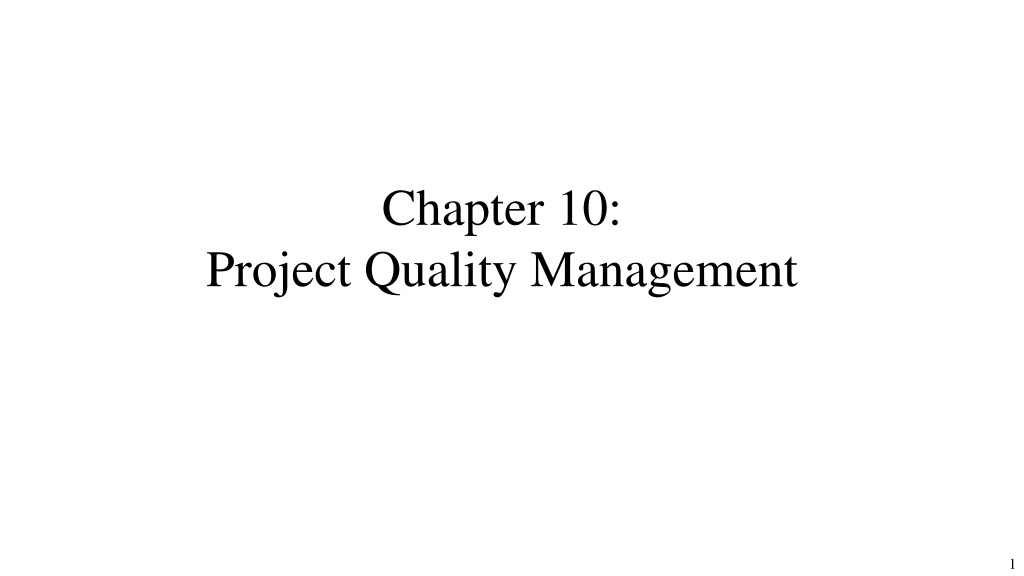


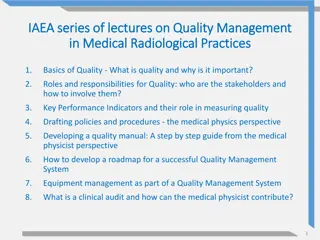

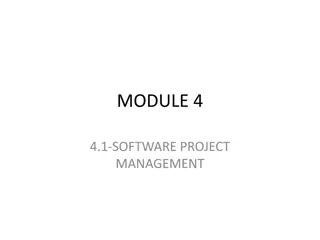
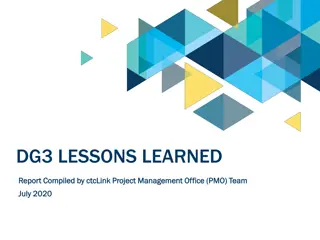
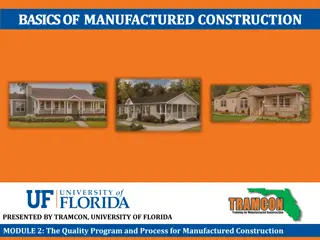
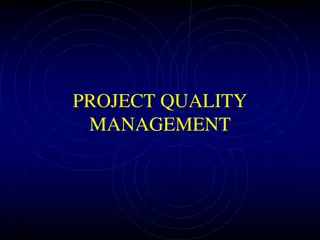
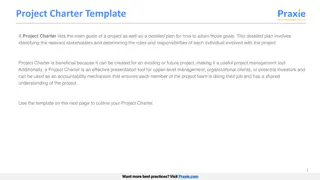
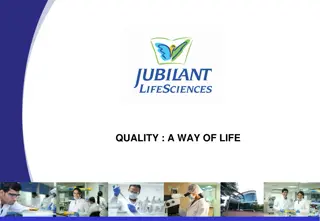
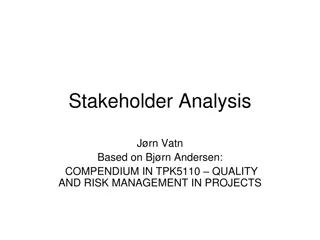
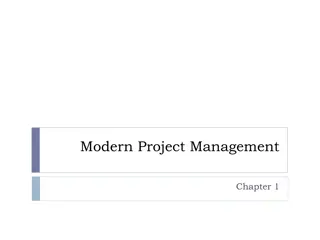

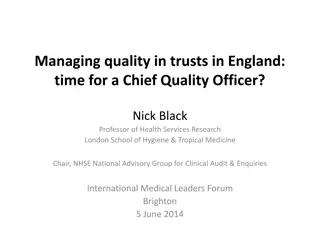
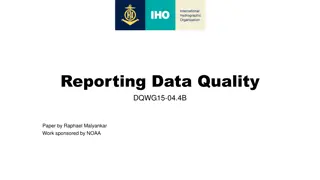


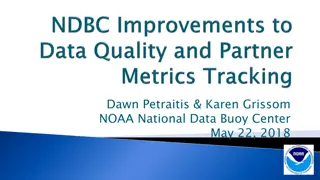
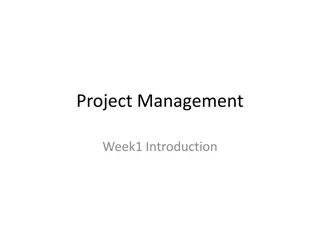
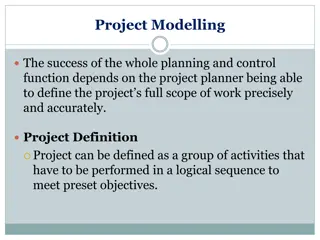


![Project Initiation Document for [Insert.Project.name] [Insert.Project.number]](/thumb/226757/project-initiation-document-for-insert-project-name-insert-project-number.jpg)